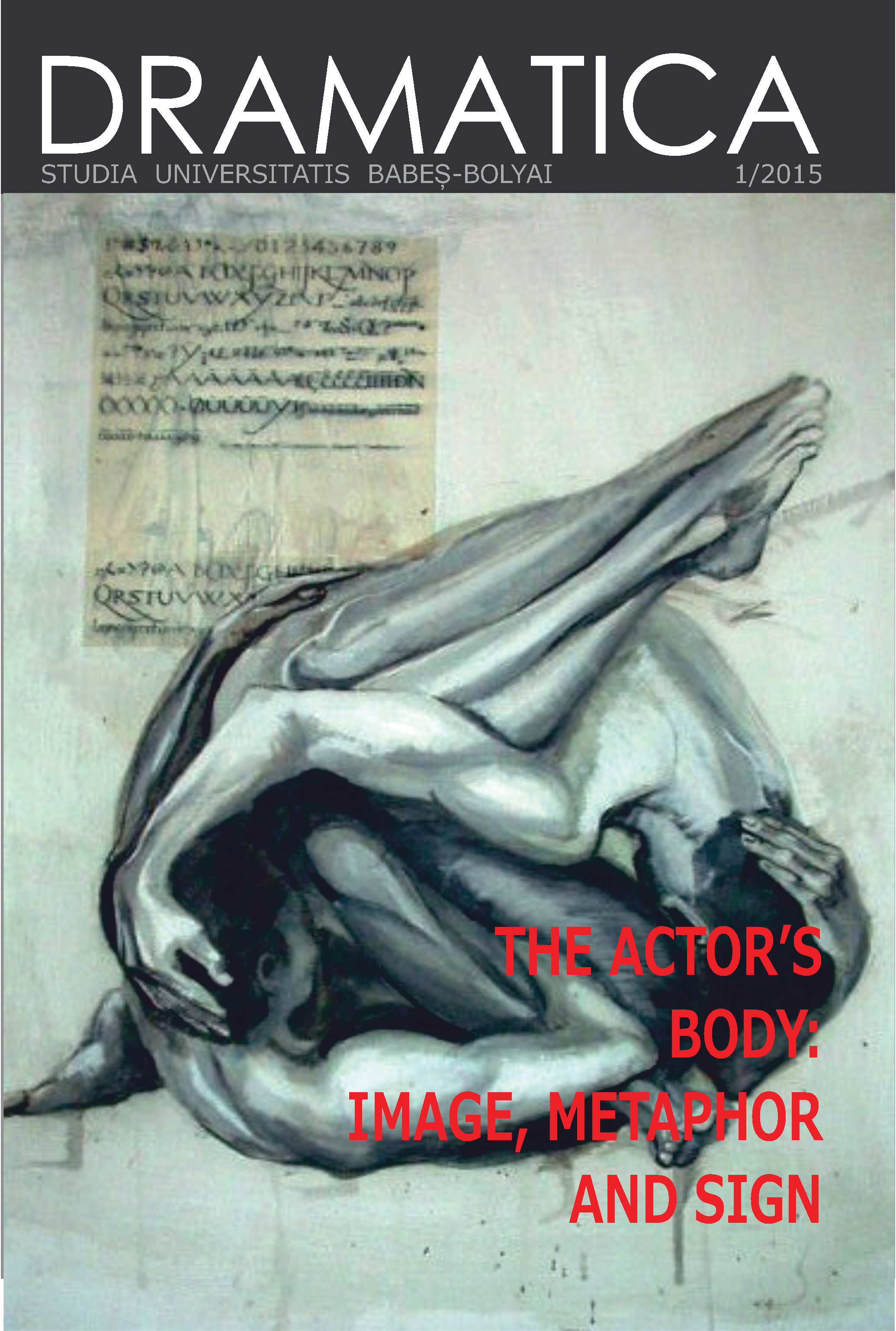Le corps conscient de l’acteur
Keywords:
body, actor, theatre, training, corporeal expressiveness.Abstract
The Actor’s Conscious Body. Even from the first decades of the 20th century, opinions about theatre start turning around the idea that not only the word can be a means of theatrical expression, but also the body. The birth of cinema and television would lead to the conclusion that the existence of theatre is justified and conditioned by sense. Thus the body, thanks to its expressiveness, can create a new language. Exploring the motor function and sensibility of the body will lead to a revaluation of the actor’s professional training and to setting up research laboratories on actor’s work. Actor’s training is required not just as personal preparation for a new role, but also as a discovery of self, self-knowledge, a physical, mental and spiritual plunging into the depth of one’s self. Physical, mental and spiritual training becomes the main activity in the actor’s professional as well as personal development.
References
APPIA Adolphe, L’œuvre d’art vivant, Genève, Atar, 1921.
BARBA Eugenio, O canoe de hârtie [Le canoë de papier], traduction de Liliana Alexandrescu, Bucarest, Unitext, 2003.
CORBIN Alain, COURTINE Jean-Jacques, VIGARELLO Georges, Histoire du corps, tome I (1500-1800), traduction Simona Manolache, Mihaela Arnat, Muguraș Constantinescu, Giuliano Sfichi, Bucarest, Art, 2005.
COZMA Diana, Dramaturgul-practician, Cluj-Napoca, Casa Cărții de Știință, 2005.
MACSINGA Irina, « Evaluarea personalităţii în activitatea de consiliere. Metode alternative » [« Evaluation de la personnalité dans le métier de conseiller. Méthodes alternatives »], in Romanian Journal of Applied Psychology, Vol. 12, No.1, 2010.
OIDA Yoshi, MARSHALL Lorna, L’Acteur invisible, traduction par Maia Teszler, Oradea, Artspect, 2009.
TONITZA-IORDACHE Michaela, BANU George, Arta Teatrului, Bucarest, Nemira, 2004.
Downloads
Published
How to Cite
Issue
Section
License
Copyright (c) 2015 Studia Universitatis Babeș-Bolyai Dramatica

This work is licensed under a Creative Commons Attribution-NonCommercial-NoDerivatives 4.0 International License.


